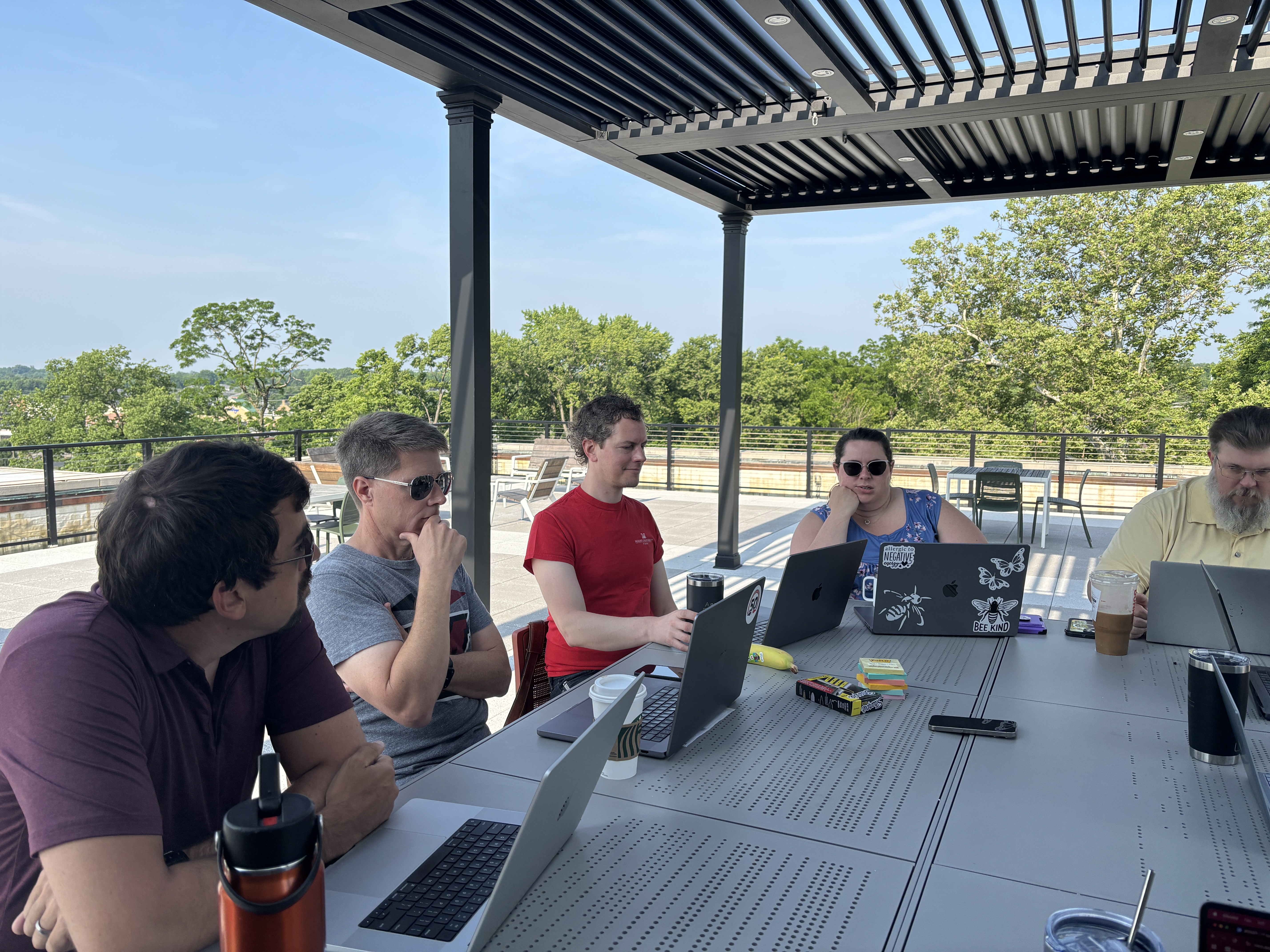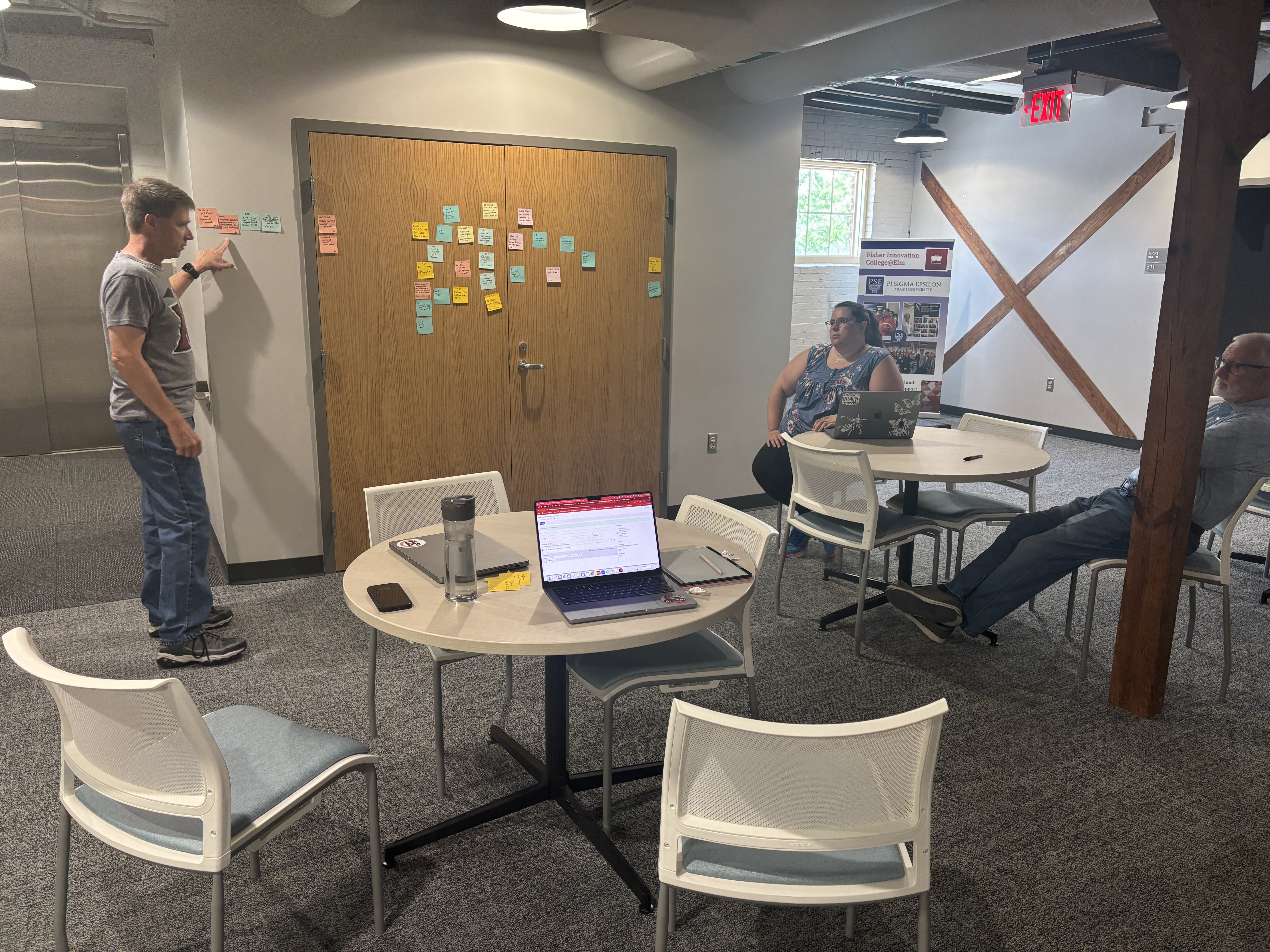The Fates: Synthesizing past strategies, establishing current goals, and ideating future projects at the IAM advance
On a sunny Thursday morning in June, a group of people tasked with managing IAM infrastructure and policies gathered in a meeting space at College@Elm and worked through what the next few years would look like for IAM at Miami.
The Fates: Synthesizing past strategies, establishing current goals, and ideating future projects at the IAM advance
The IAM Program continues to make strides toward a mature identity and access management (IAM) practice, showcased by the team’s recent day-long brainstorming and strategizing session, affectionately referred to as their yearly “advance” (“It’s not a retreat!” said Program Manager Erin Mills. “We’re not retreating! We’re advancing.”). On a sunny Thursday morning in June, a group of people tasked with managing IAM infrastructure and policies gathered in a meeting space at the College@Elm Innovation and Workforce Development Center and worked through what the next few years would look like for IAM at Miami.

Advancing toward our goals–one sticky note at a time
A key outcome of this year’s “advance” was to determine what projects and goals need to be a priority for The Fates and the rest of the IAM team for the coming academic years.
These projects include things like investigating our single sign-on services (which is how you access all Miami-related apps by putting in your UniqueID and password); establishing new sources of authority for the data in RapidIdentity (RI) (namely, Slate and Workday Student); and improving the tools that help support teams identify issues within Miami accounts.

That last point is an especially interesting project to unpack, and will be useful information for many different groups at Miami. Right now, support teams (such as IT Help, the Tech Support Lounge, and the technology support staff embedded in the academic divisions) use a tool called Real Time FindUser (RTFU) to display information about Miami accounts and troubleshoot issues at the account level. Unfortunately, RTFU is a homegrown app deeply tied to Banner, and when Miami is fully engaged with Workday (both Platform and Student), the data in RTFU will no longer be up to date.
This means we’ll need a new app that provides similar functionality while pulling data from the proper source of truth (Workday). Never fear: We are already working on it! This is one of our bigger goals of the academic year, and we should have more to say very soon.

Forecast calls for more IAM
One of the other main goals of the “advance” was to produce a high-level timeline for when the aforementioned priorities will be achieved. You can view the timeline in full at our website: MiamiOH.edu/IAM, but we wanted to make sure to highlight a few important pieces of the strategy that came from the advance activities.
Highlight 1: You get a claim code! Everyone gets a claim code!
We are focusing on revolutionizing our account claim processes to bring them more in line with industry standards. Namely, we want to move from our default password process to a process based on claim codes. Currently, a person is assigned a default password to access Miami systems for the first time, based on knowable numbers meaningful to that person (e.g., birthdate and Social Security number).
The desired state is that when a person comes in contact with Miami for any reason that means they need an account to access our systems (e.g., faculty, staff, student, contract worker, etc.), they will receive an email that contains an eight-digit claim code that they can then input at accounts.miamioh.edu to activate their account. Not only is this an easier method of account claim. It’s more secure, too, and it’s industry standard.
Highlight 2: New sources of authority
As mentioned previously, Banner is going away (visit MiamiOH.edu/WorkdayInfo for the scoop about that transition). This means we will need to establish Workday Student as a source of authority for RI. Since the team has previously tackled the integration between RI and Workday Platform, we know more now and are more prepared for the transition to Workday Student. Bring it on!
We are also working to establish Slate for Advancement as a source of authority for RI. Advancement goes live with Slate in October, and we’re working alongside their team to be ready on the IAM side of the house.
Highlight 3: Strategic enhancements
As the forecast progresses, the core goals of the IAM Program shift from more reactive work (e.g., adding sources of authority and bringing us in line with industry standards) to true maturation of the IAM practice. Past the 2026 academic year, the team will have the opportunity to make enhancements to the program. This will look like solidifying business continuity strategies and investigating our single sign-on architecture. It will also look like planning for our system to be able to manage identities throughout the lifecycle, from first point of contact to last, and even beyond.
Just the beginning of the future of IAM
The 2025 IAM Strategic Advance was just that – an advancement of our goals and dreams for the IAM Program. This was just a snippet of what was discussed. Check out the full forecast at MiamiOH.edu/IAM.